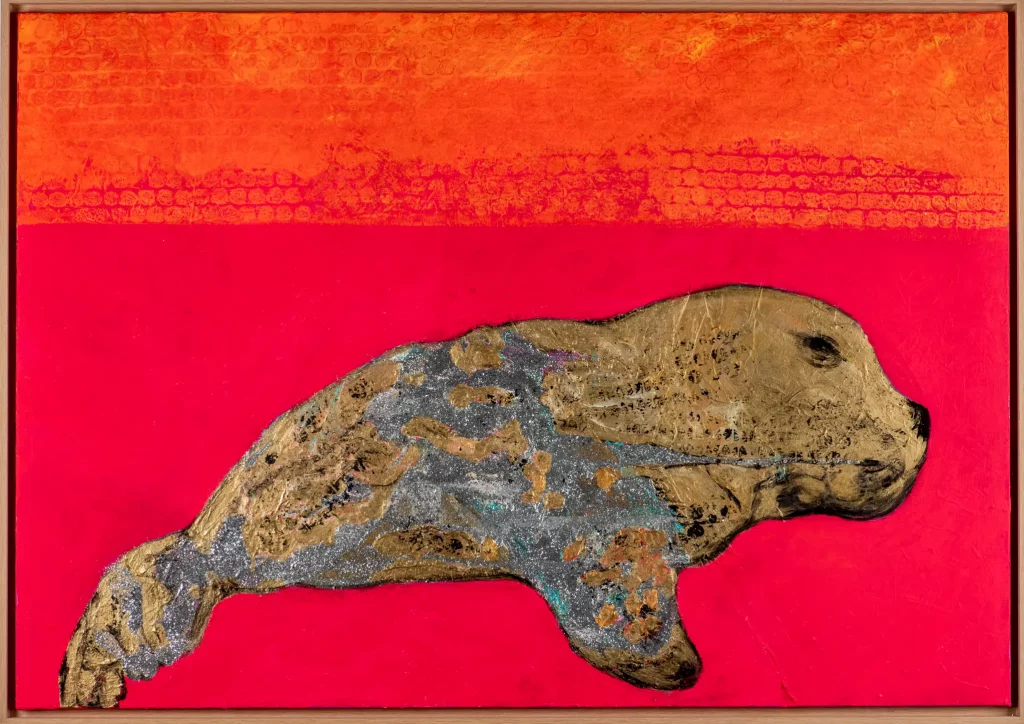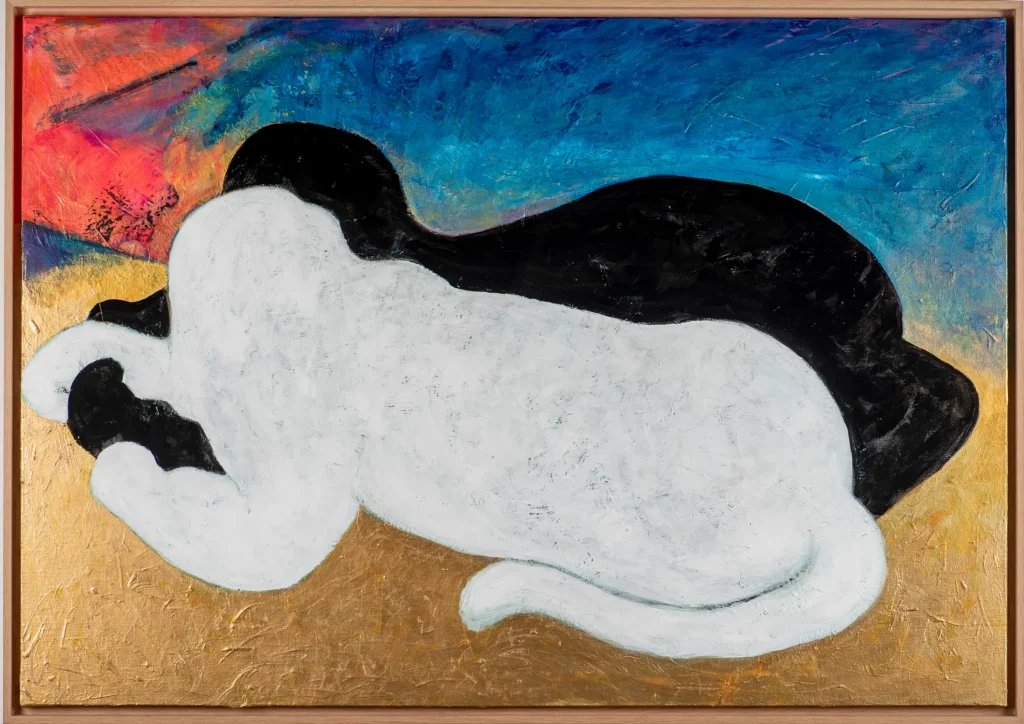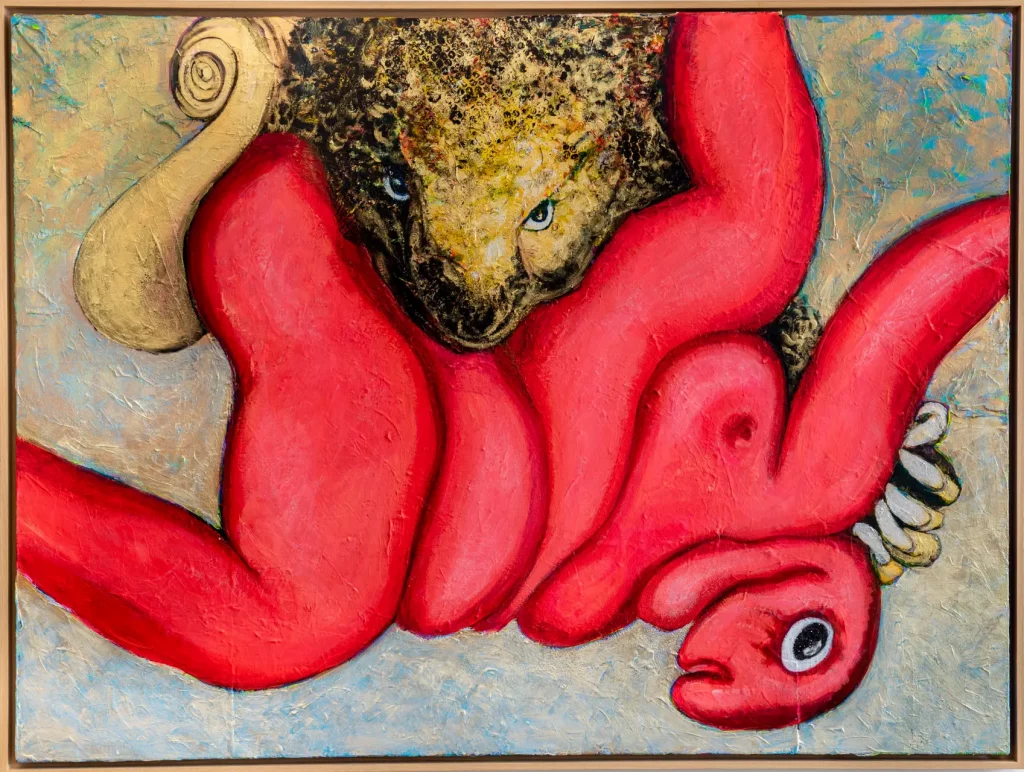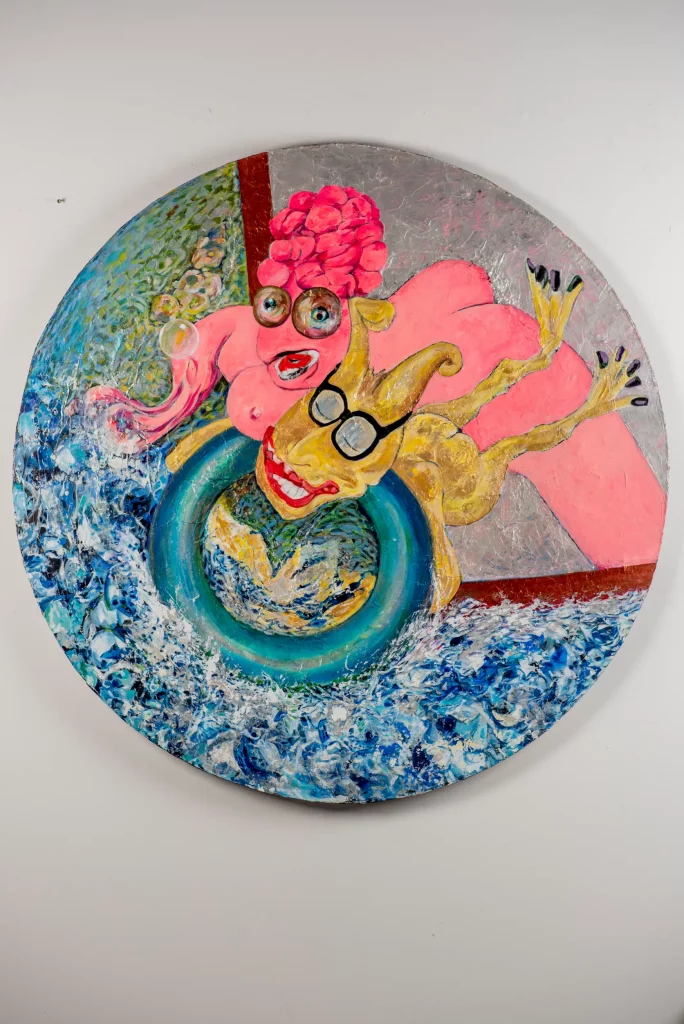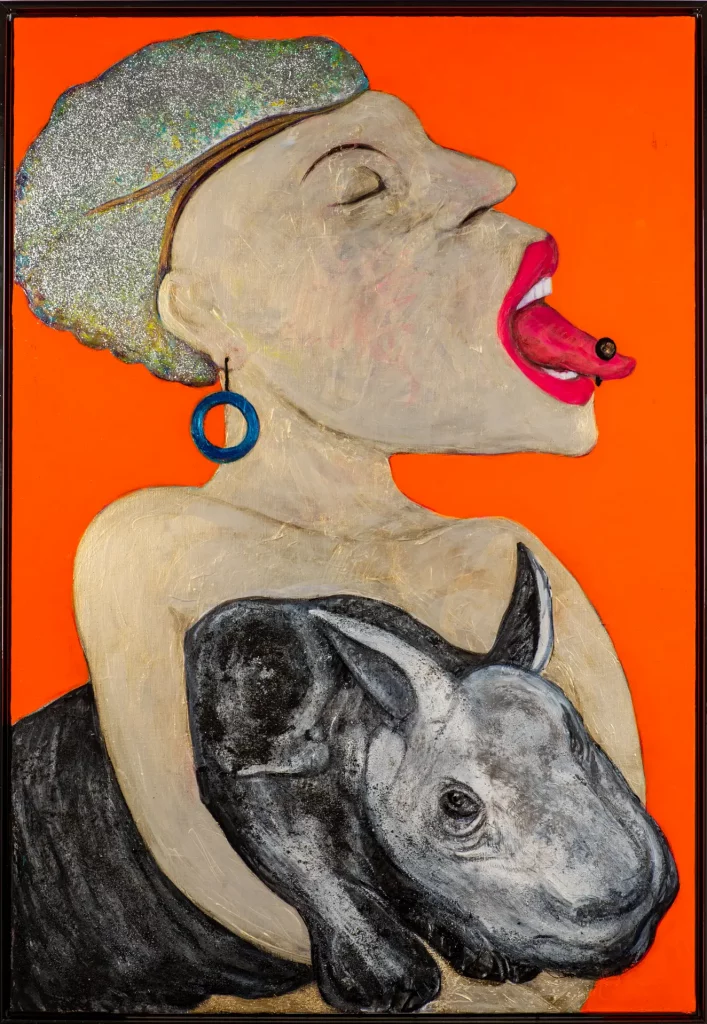The advantage of a fantastic bestiary is that it offers an imaginary zoology far richer than that of nature—though the painted creatures may draw inspiration from it. The beasts of Richard Conte, which have been central to his work for many years, are beings of paint: entangled, intertwined, bound together. They are creatures of whimsical species, locked in jubilant, fraternal, or ferocious collusion with the human. It is painting that leads the dance—driving the whirling figures, choreographing the struggles, the embraces, the caresses, the threats, the dreams. At times, glitter heightens the surface and the beings that inhabit it. The color is organic—tart, flamboyant. The material is dense, vibrant.
Richard Conte’s painting contains no decorative accessories. His “monsters” fill the entire space. Mischievous, sarcastic, or critical fables unfold tightly within the canvas, avoiding excess verbiage, becoming the very subject of the painting. The beasts transcend their species—distorted, contorted—stretching toward the human, or at least evoking it through posture, through glance, through visual confrontation.
There is no implicit moral to these fables. The eroticism that tinges them—sometimes playful, excessive, or transgressive—is simply another paradoxical facet of the wonder that emanates from his work.
While Richard Conte’s painting is most often expressed on large canvases, he also produces daily drawings and paintings on stacks of cotton paper, which he binds into notebooks of 192 pages. These form both a singular source of inspiration and stand-alone artist’s books.
A theorist of poïetics and well-versed in Surrealism, Richard Conte was mentored by painter, philosopher, and art historian René Passeron.
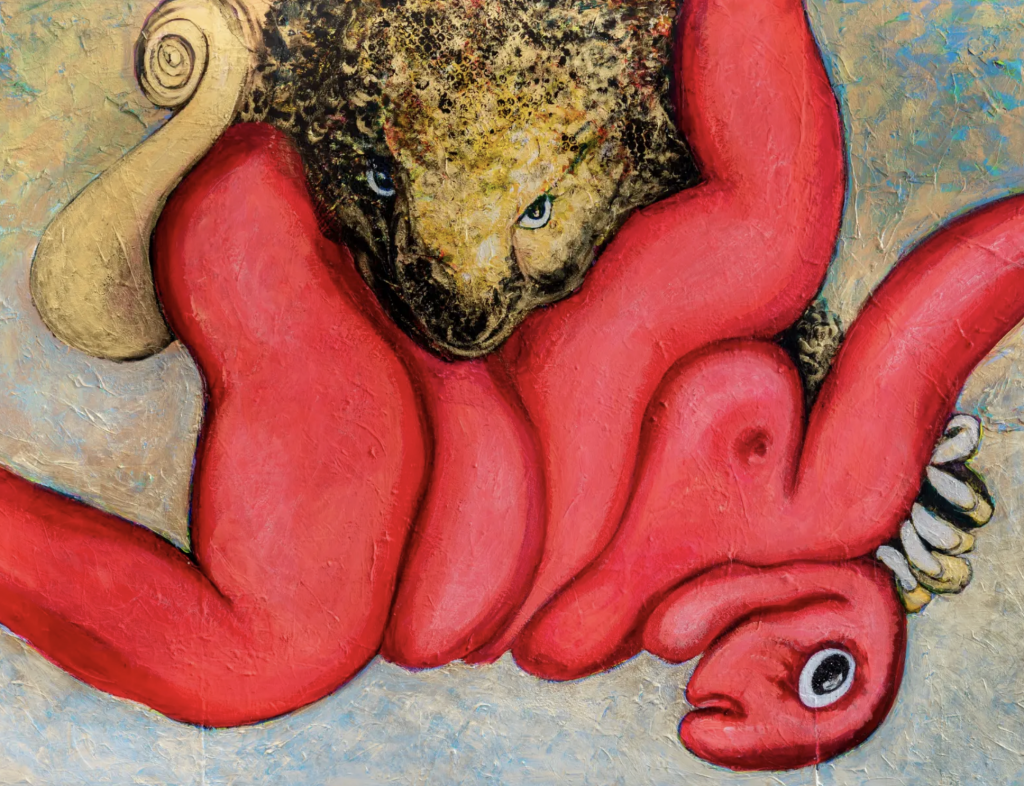
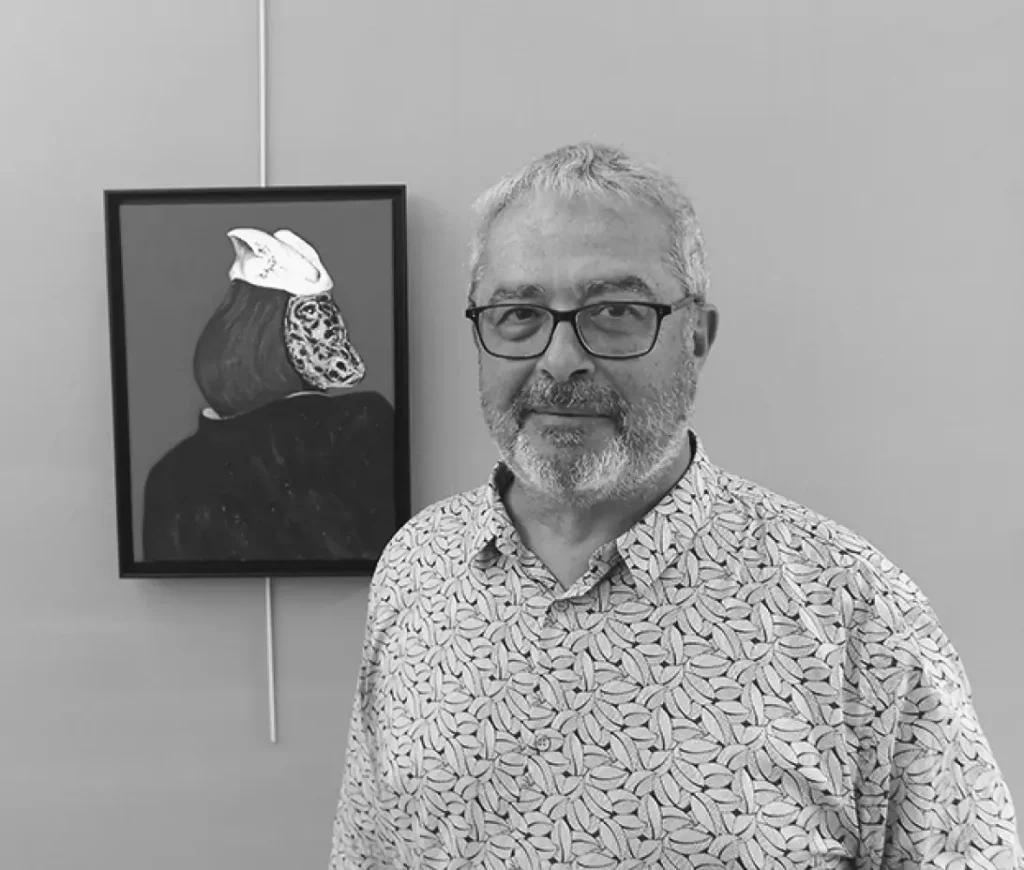
Born in 1953 in Philippeville. He lives and works in Yerres (France).
Richard Conte works across painting, performance, and film. He combines artistic practice with research and teaching. He is currently Professor Emeritus at the École des Arts of Sorbonne University in Paris. His research focuses primarily on the study of creation (Poïetics), in relation to painting, philosophy, insularity, science, and sport.
Selected Solo Exhibitions (or Almost)
2025 Un bestiaire des forêts. Maison des Arts. Brunoy
2023 Galerie DB, Paris
Danse avec les bêtes. Galerie GAZ. Les Sables d’Olonne
2020 Galerie Michel Journiac, Université Paris 1, Entre amis (avec Michel Gouéry).
2013 Galerie du Tableau, Marseille, (avec Jiří Kornatovský)
2009 Galerie Deborah Zafman, Paris.
2005 Musée Nicéphore Niépce, Chalon-sur-Saône, France.
2001 Espace d’art contemporain Camille Lambert, Juvisy-sur-Orge, France
2000 Musée d’art contemporain de l’université nationale de Séoul (avec Jean-Pierre Brigaudiot),
1997 Château Dampierre, Anzin (Hauts de France), Les Années Rondes, 1996–1986.
1996 Galerie Nicole Ferry, Paris. Les Autonus.
1994 Musée des Beaux-Arts . Bourges
1993 Université de Pau et Galerie Pascal Weider.
1992 Galerie Nicole Ferry, Paris
Galerie Art et essai, Rennes.
1988/89 Galerie Nicole Ferry, Paris.
1988 Galerie de l’Université de Toulouse-le-Mirail.
1986 Musée Gauguin, Papeete (Tahiti)
Galerie Eros Errance, Rouen, France.
1985 Centre culturel Jacques Brel, Thionville. (avec Jean Hélion)
1982 Galerie Pierre Lescot, Paris.
Latest publication
2024 Rêves de bête. Richard Conte et Michel Guérin. Collection Diptyque. Éditions la Part de l’œil
2022 Les animaux malades de l’humain, Catalogue d’exposition, Institut Confucius de Tahiti (Texte de Richard Leydier)
2020 Danse avec les bêtes (avec le poète Serge Pey) éditions Tarabuste
2018 Entre amis (avec Michel Gouéry et Gilles Tiberghien), catalogue de l’exposition à la galerie Michel Journiac, Paris.
